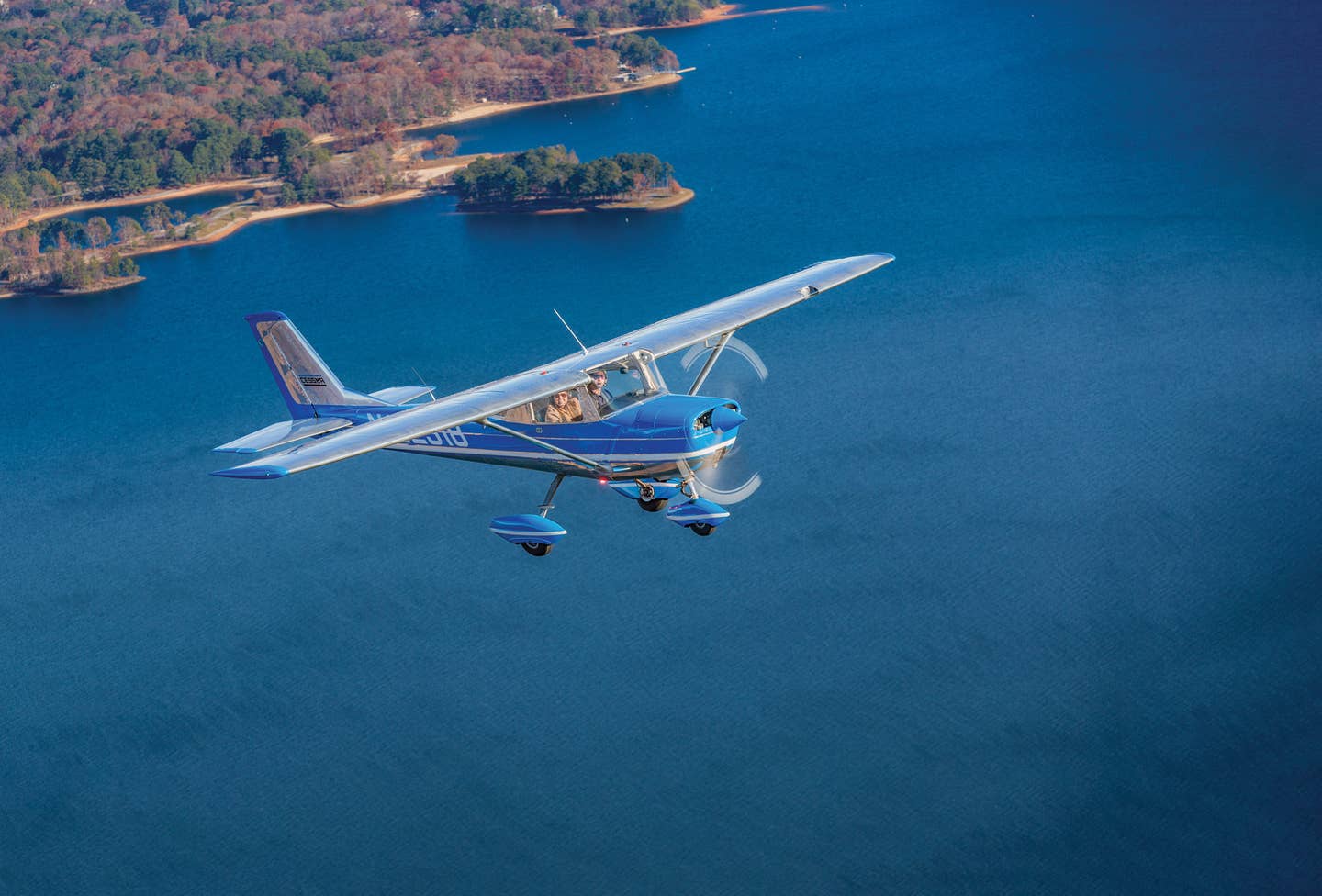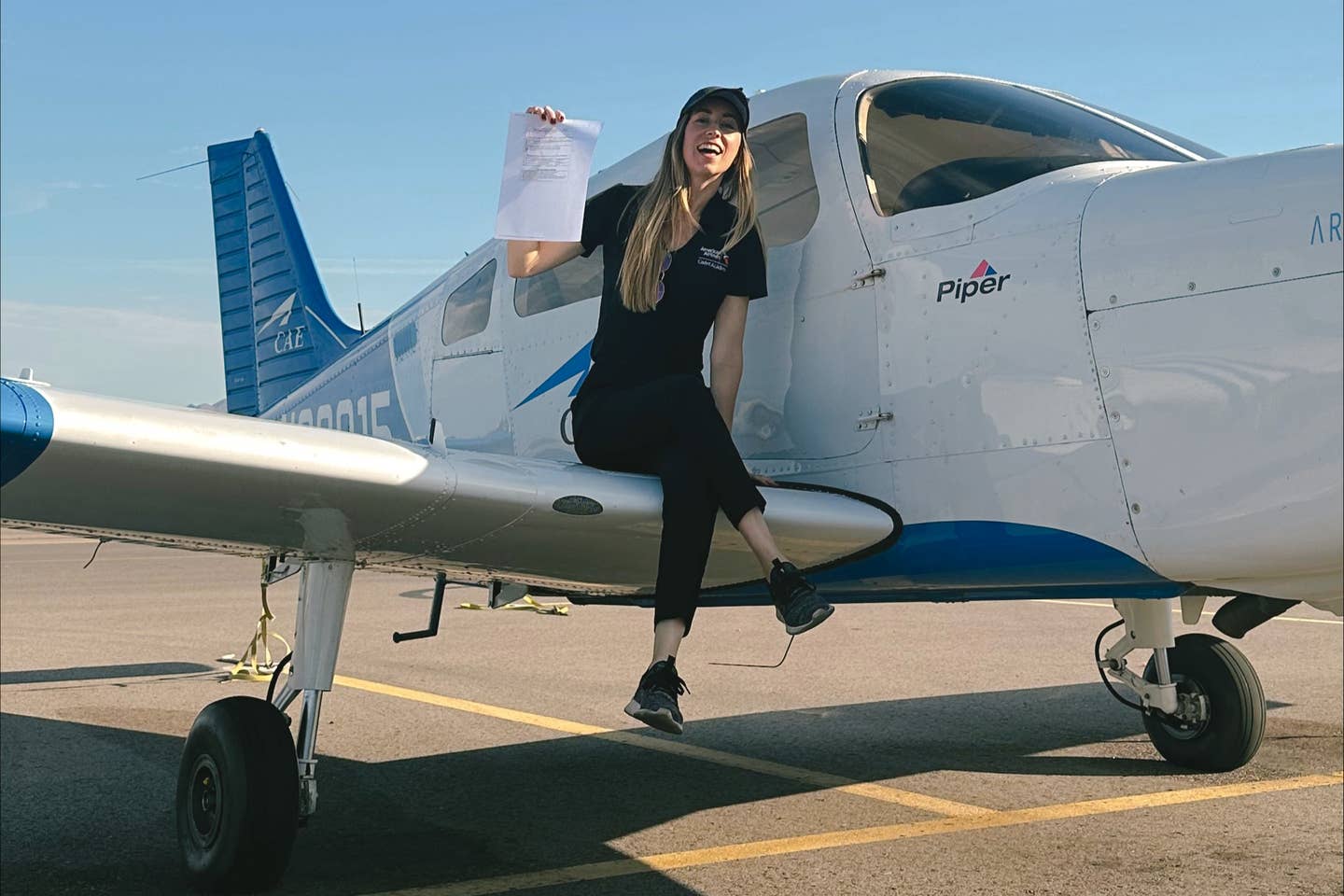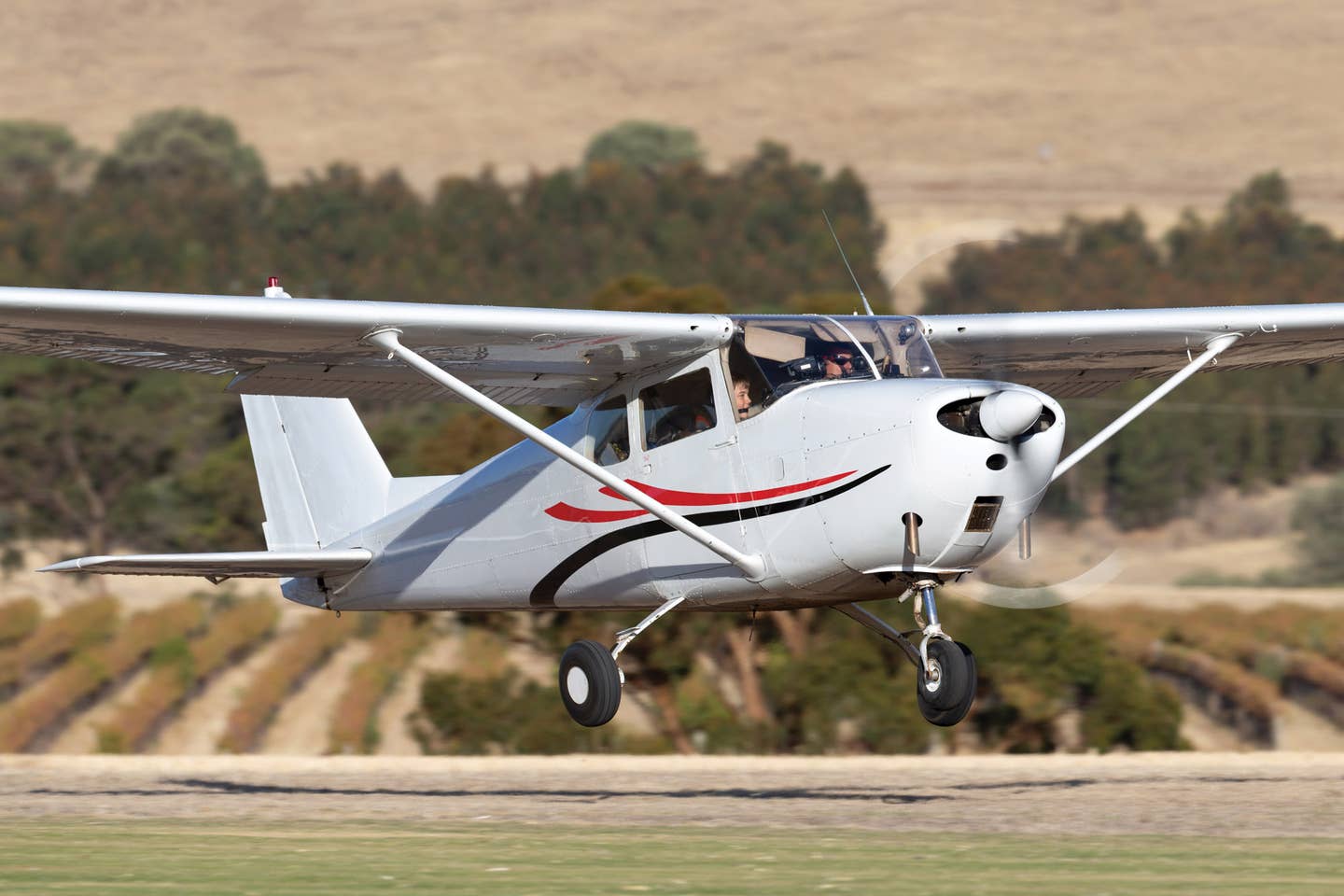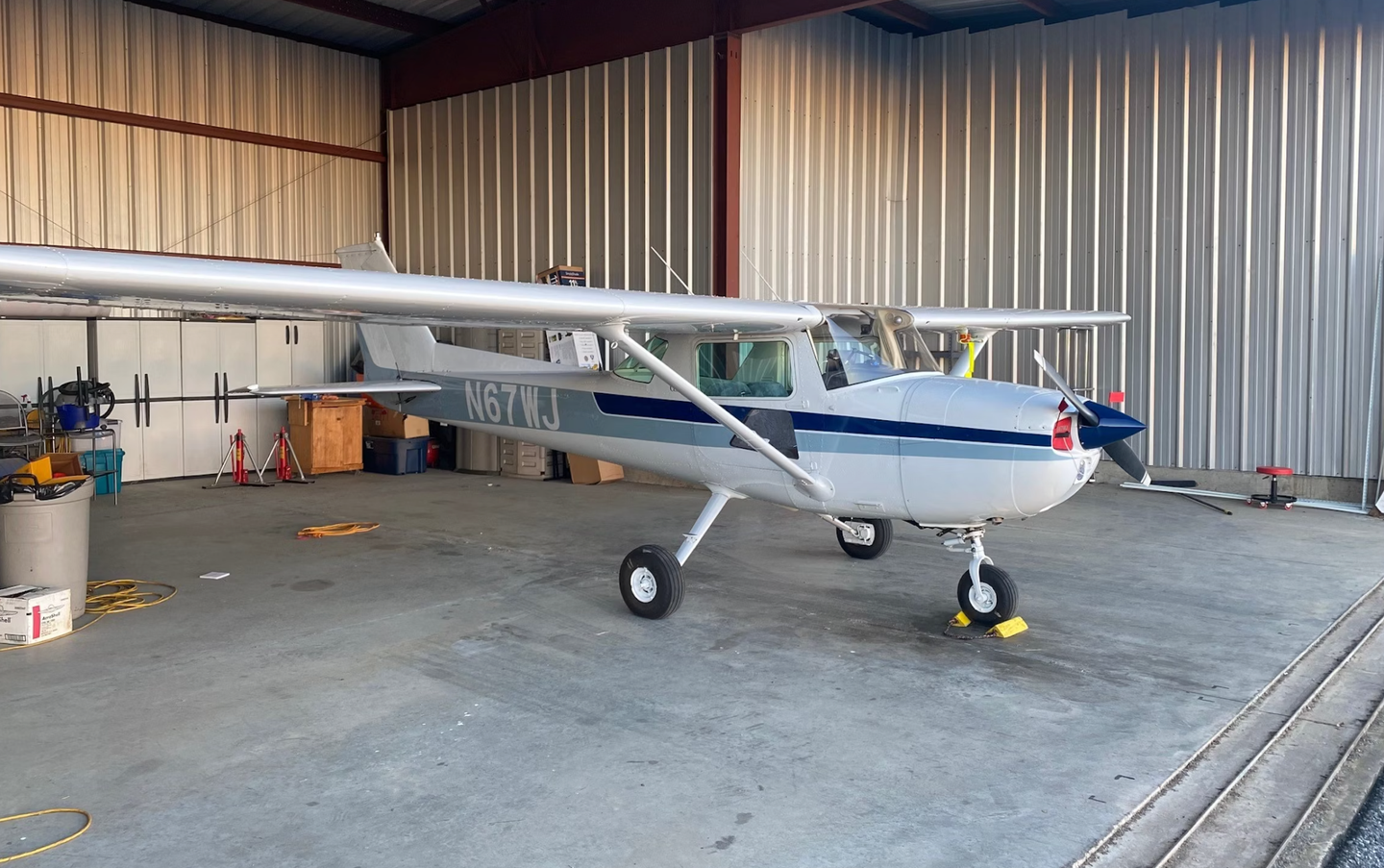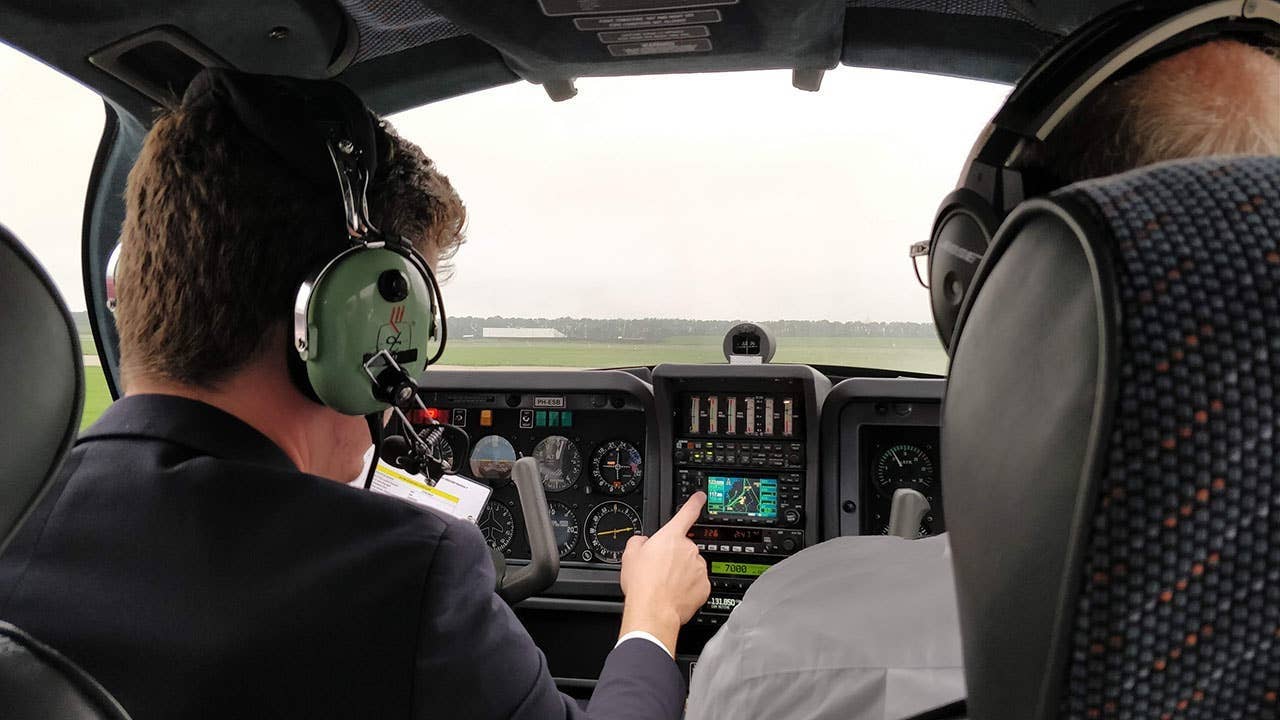Cessna TTx Shines
After more than 10 years in production, this remarkable and too often overlooked single has become the star it was always meant to be.
I sometimes get calls out of the blue asking me for my advice about airplane buying decisions. Sometimes the caller isn't so much seeking guidance as much as getting confirmation that the decision they've already made is the right one: "Yeah, a Cessna 180 sounds like a great airplane for you," I'll often concur.
When it comes to new planes, far and away the most common call I get is from someone who's looking to buy either a Cirrus SR22 or a Cessna TTx. Almost without exception, they hope that I might have some secret knowledge that would help them make the call, because they can't really figure it out.
I don't blame them. It's a complicated decision, and the truth is, I don't have any secrets to expose. Both the SR22 and TTx are terrific airplanes, though both of them, in my estimation, are misunderstood, except, that is, by people who fly them a lot. And I've had the opportunity over the years to fly them both. While I have around 1,000 hours in SR22s, I have far less time in the TTx, a grand total of 46 hours, but that has been enough experience to get to know the airplane well. It's a remarkably honest airplane.
The long and winding story of the TTx precedes it, and I'd argue that it's not particularly relevant anymore. Still, this is the story in a nutshell.
"What kind of pilot is the Cessna TTx for? The TTx is a great choice for pilots who want to fly long distances (as much as 1,000 nm legs) at great speed and do it in style and comfort. An instrument rating is a must for this kind of flying."
The original ancestor of the TTx was a fixed-gear four-seater called the Lancair ES. Over the years that plane would morph from a concept-driven kitplane built by Lancair into a production four-seat speedster originated by Columbia Aircraft into the polished speedster it is today under Textron Aviation's ownership. Lancair's very good idea was to create in the ES an airplane that was easier to fly than the company's notorious Lancair IV, a retractable kitplane that was crazy fast but a handful to fly, with questionable stability and ridiculously fast approach and engine-out speeds. They also decided upon fixed gear, for cheaper insurance and less pilot workload and mechanical complexity. Sound familiar?
The ES would eventually become the basis for the certificated Columbia-series airplanes, of which there were eventually two, a normally aspirated and a turbocharged model. The planes were very well received, but unable to deliver on their promise because of a series of financial, production and act-of-God calamities that wound up putting the company into bankruptcy.
Which is where Cessna entered the tale. The Wichita giant bought the program, got production humming again at the former Columbia Aircraft factory in Bend, Oregon, and then proceeded to work the airplane, a rare adoptee, into the Cessna family lineup. After Cessna moved component production to its Mexico facilities and got some substantial teething problems worked out, the airplane was on its way to being a major player in the single-engine game.
"What are the TTx's strengths? It's the fastest in its class, it's stylish, very technologically advanced and strong. The TTx has great flying manners and tremendous ramp appeal."
While the complicated story of the TTx---it has had a few different names, including the Oregon-inspired moniker "Corvalis"---is interesting, it makes little practical difference today, except to underscore the high regard that Cessna had for the speedster. The investment is finally paying off. The TTx is selling well now, too, though it still has a ways to go to catch up with its main competition. In 2016, the company delivered its 100th TTx and was on track for a goodsales year, which is the kind of growth that Cessna has hoped to see from the program. After all, the TTx is the fastest in its class, by a good shot, too.
"What are the TTx's weaknesses? It's expensive, though slightly cheaper than its main rival, there's no whole-airplane parachute, it's limited to four seats, and the cabin comfort and visibility aren't quite as good as the competition."
Which brings up the other part of the TTx story, that of the Cirrus SR22, the TTx's main competitor and I would argue it's only true competitor. The only problem, and it was a big one, for the TTx is that considering its rough early years, the SR22 got a very substantial head start on what would become its main rival, though mostly in theory at the time. Until recently, few folks at Cirrus Aircraft have been losing sleep over the TTx. While Columbia and then Cessna were spending time and money developing the airplane into the mature and very satisfying product it is today, Cirrus was selling SR22s, lots of SR22s. Which they continue to do.
And while the SR22 thrived and quickly attracted a cult-like following, the Columbia struggled, which is a shame, because in many ways, it's more of an airplane than the SR22 is, and I believe the SR22, as those of you who've been reading me for a while know, is one heck of an airplane. It's nice to have some real competition.
Feeling It
It was still warm in Central Texas, which means "really hot," when I went flying with demo pilot Will Klein from Textron Aviation recently. As you know, Textron Aviation is the parent company of both Cessna Aircraft and Beechcraft, which makes it hard for journalists to know how to refer to airplanes and employees alike. Textron gets that, and has no problem with both media types and customers sticking with the legendary brands. (No worries: The Cessna 172 is not about to become a Textron Skyhawk.)
The TTx is not a new airplane to me, though it has had a number of improvements of late that I haven't had the chance to get to know well. But the bones of the plane I know well. I've flown every iteration, from that first Experimental concept plane in the early '90s to the latest Garmin G2000 touch-controlled avionics model. So my recent flight was as much a reacquainting as anything. Like a number of other planes I love, the TTx is like family in that way.
What's The Difference Between TTx And SR22?
There are numerous differences between the Cessna TTx and the Cirrus SR22, and there are numerous similarities.
First, the elephant in the baggage compartment. The Cirrus SR22 has a whole airplane parachute. There have been more than 100 confirmed saves of occupants thanks to the chute, which lowers the entire airplane in the event of something terrible happening, such as the pilot losing control in some instances. The chute is expensive to maintain---repacks are required every 10 years and cost around $15,000. The chute takes up some payload, too, around 80 pounds, and you lose some baggage capacity. But it has proved to be a lifesaver in many instances and you can't get it on the TTx.
Both are low-wing composite construction models. New versions of the SR22 (the G5 model) are five-seat planes, though the rear seating area is really only for two adults and a child or two. Both have remarkable interior room compared with legacy models, but the SR22's interior dimensions are more pleasing to many who have flown in both planes. The TTx has inflatable door seals for some improvement in noise reduction, but both are so noisy---it's the nature of high-performance singles today---that you'll need a good headset in either one.
Both use the Continental TSIO-550 engine, though the Cirrus has a power control setup that uses only a throttle and a mixture (no prop), and power control is dirt-simple, giving pilots some of the advantages of single-lever power but all done mechanically. The TTx has conventional power controls, and they require much more hands-on and heads-down time than in an SR22. Both airplanes are easy for pilots to transition into. The TTx has more pleasing response,
better-harmonized controls and easier landing manners. The SR22 has better forward visibility.
The TTx has superior avionics, the G2000 touch-control suite, and the latest-gen electronics from the world leader in light plane displays. The SR22 has the previous-gen G1000 panels, remarkably capable. Both have tremendously advanced safety utilities that accompany the electronics suite. These include envelope protection, synthetic vision, extensive autopilot capabilities with great vertical nav, and weather and charts, among many others.
The TTx feels different than any airplane I've flown---they all feel different, true, but there's something very distinctive about the TTx. Even in taxi it feels very solid, like an airplane larger than it is, in fact, and the sense I get is more like driving a Porsche Panamera than a family sedan. Like the SR22, you steer the TTx on the ground by use of differential braking, so it can turn on a pivot, making both sharp taxi turns and parking a breeze. The gear is solid feeling but damps bumps and uneven pavement well enough.
We were flying out of KAUS, Austin's Bergstrom International Airport---it was a south operation that day so we got the two-mile taxi from the Atlantic Aviation FBO location.
The sound of the TTx is all its own, too. The tower cleared us for takeoff, and I rolled the corner, paused briefly to advance the power---you don't want to just cram and go with a turbo---and felt the TTx push us back in our seats as the turbo took hold. We were at 72 knots before we knew it, I glanced down for the gear lever---oh, yeah---retracted the flaps through 400 feet, and soon started the gradual turn to the west as instructed by the tower.
The handling is awesome, and this is one area where the TTx has it all over the SR22. With the sidestick, the feel is smooth and intuitive. Unlike the side yoke in the Cirrus, the stick is just like a stick in a vintage warbird, a single point of attachment that gives you infinite aileron-elevator control input options while being mixed to perfection. On the Cirrus, the side yoke is exactly like a yoke on a Skyhawk, for instance, with the two axes being separated into two different planes of control---back and forth for the elevator and side to side for the ailerons. Both work, but the TTx's sidestick is more pleasing.
As you might imagine, the TTx gets up to altitude in a hurry. With 310 hp up front, it can climb at a maximum rate of 1400 fpm. Knowing that ATC expected us to get out of their hair without climbing at the slow but steep best rate of climb, I settled for a cruise climb at 120 knots, which still produced over 1,000 fpm.
The electronics are a wonder. As I've said, the TTx is the only single-engine piston airplane with the G2000 suite, though I've been suspecting that Cirrus might roll it out in its SR22 anytime now, but it has given no indication that it would do that. It seems very happy with its excellent G1000-based Perspective flight deck. The G2000 goes many steps beyond G1000, though. The entire user interface paradigm is new, and this is a good thing. Instead of having the menu hierarchy system of the G1000, the G2000 (just like the new Garmin suites in jets) makes use of a graphical interface that's very shallow, which in this usage is a good thing. Shallow means that you're never more than a selection or two away from where you want to be, so even complicated stuff, like programming in vertical nav, is greatly simplified.
Like the SR22, the TTx handles really nicely at low airspeeds with the flaps extended---the gear is always helping. There are also speed brakes, a really nice addition for managing airspeed, especially when approach asks you to "keep your speed up" to help with jet arrivals. The speed part is no problem, but when you have to transition from near-cruise speeds to approach speeds, the speed brakes make it a faster and easier process to manage.
The sight picture from the TTx is different from the SR22, or for that matter, from any other single I've flown. The front area is small, as part of that overall aerodynamic slipperiness I mentioned earlier, so the view out front seems a bit narrow, at least compared with that of the SR22, which I'd call expansive. Speeds in the TTx are typical for an airplane in this class---90 knots on final transitioning to 80 knots at 50 feet and slowing from there to a slow flare and landing. Like the Mooney Acclaim and SR22, the TTx lands best when there's not a lot of extra speed to bleed off. Otherwise, it just wants to keep flying, a trait we like in our airplanes.
For pilots looking for a combination of speed, simplicity, reliability, high-tech electronics and fine flying manners, the Cessna TTx is right at the top of the list. There are competitors, including the Cirrus SR22, but for pilots who, among a number of other choices, don't need or don't want the chute, the TTx offers a fast, sexy and technologically advanced alternative catching the eye of more buyers than ever.
Cessna TTx Specifications
What's In A TTx?
There are a number of things about the plane that I take for granted that should probably be said out loud, both for those of us who aren't as familiar with it and for those of us who are, but are apt to forget how big a deal things we take for granted can be---okay, I'm talking mostly about myself here.
- It's a fixed-gear airplane. That means a lot of additional drag, but a great deal less mechanical and user complexity, as well as much lower insurance premiums. None of that has changed in the more than two decades since the concept was launched.
- Construction: The TTx is constructed mainly out of fiberglass with carbon fiber used in places it makes the most sense. Its aerodynamics are really slick, and that's not just spouting the manufacturer's standard line: You don't get 230 knots out of a fixed-gear single unless it's incredibly efficient.
- Power: The powerplant is the Continental TSIO-550-C, a 310 hp turbocharged, six-cylinder, air-cooled opposed engine that's for all intents and purposes the gold standard in high-performance GA. The TTx has conventional power management, with separate throttle, mixture and propeller controls.
- The TTx is really fast, just over 230 knots at 25,000 feet. It's probably more instructive to ask how fast is it at the altitude you fly at, since not many of us use anything over 17,000 feet on a regular basis. The answer: around 220 knots at 16,000, on my last flight at that level. That's hauling.
- Fuel flow is around 18 gph at high cruise. That's about half of what a twin of less performance consumes per hour. The TTx has one engine, however, so engine-out scenarios are a bit more attention-getting.
- The TTx is a utility category airplane, not a normal category one, as most four-seat planes are. This means it has gone through more rigorous strength testing, so its structure is not only as strong as it needs to be, it's even stronger than that.
- Control is via a true sidestick, like the one in the F-16 fighter.
Check out the TTx and other fantastic single-engine airplanes in our latest Piston Singles Buyer's Guide.

Subscribe to Our Newsletter
Get the latest Plane & Pilot Magazine stories delivered directly to your inbox

